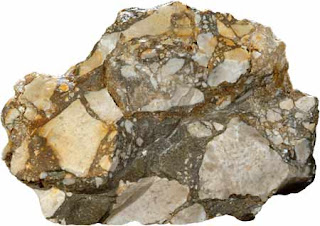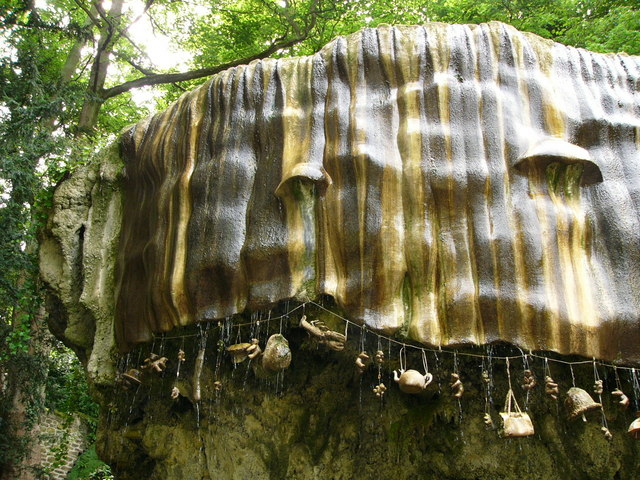Chalk-carts, like mice, and dead leaves, and most other matters in the universe are very curious and odd things in the eyes of wise and reasonable people.
The White Cliffs of Dover
The White Cliffs of Dover
I couldn't find a definition of 'chalk-carts' anywhere although it's obvious Kingsley was referring to the carts that carried chalk from the area where it was cut. From what I've read (here, for example) it appears the carts were part of a horse-drawn industrial tramway, something that was introduced at the beginning of the nineteenth century. This chapter was fascinating once I understood the gist of what Kingsley was getting, at which wasn't obvious to me until after I'd done some digging around.
Chalk, limestone and marble are all forms of calcium carbonate. Chalk and limestone are formed in marine environments while marble is metamorphosed limestone.
This page explains the difference between limestone & marble.
Marl - a mixture of clay and calcium carbonate.
Come, let us find out something about the chalk before we talk about the caves. The chalk is here, and the caves are not; and "Learn from the thing that lies nearest you" is as good a rule as "Do the duty which lies nearest you."
Chalk, limestone and marble are all forms of calcium carbonate. Chalk and limestone are formed in marine environments while marble is metamorphosed limestone.
This page explains the difference between limestone & marble.
Marl - a mixture of clay and calcium carbonate.
Many of these (chalk) pits are located near farms and settlements where one principal use of the chalk was for the production of lime which was used to ‘fertilise’ or ‘lighten’ heavier clay soils and also to improve drainage and make it more easy to cultivate.
The South Downs area of England is a series of chalk hills in the Hampshire, East Sussex, West Sussex counties. The chalk landscape acts like a giant sponge, and stores water. A huge underground reservoir provides fresh drinking water for over 1 million people living in the area.
Karst Landscape - Kingsley didn't use this phrase probably because it wasn't in use until the late nineteenth century, but it refers to a limestone region where most or all of the drainage is by underground channels and where erosion has produced fissures, sinkholes, underground streams, and caverns. Some photos and more information here.
I've travelled across the Nullarbor Plain many times but it was only when I was reading though Madame How & Lady Why that I discovered that it is the world's largest limestone karst.
I've travelled across the Nullarbor Plain many times but it was only when I was reading though Madame How & Lady Why that I discovered that it is the world's largest limestone karst.
Page 126 - The 'silver Itchen' - one of the most famous chalk streams of Hampshire in England which attracts anglers from all over the world.
Page 126 - invisible chalk in the water causes it to be 'hard.' A written narration from 10 year old Moozle:
"Chalk is many different things. Limestone is a harder form of chalk, and marble is chalk heated up. There is lots of chalk in England, the White cliffs of Dover are made of chalk, and lots of other things are made of chalk, not just in England, but in some other countries. The chalk runs out of caves made by the water in little streams, and thus deposits it in the rivers. If you drink water out of one of these rivers, it’ll taste kind of hard. That’s the chalk in the river that’s making it taste hard."
Page 130 - Caves
Cave fomations (Speleothems) - some good photos here of Jenolan Caves in NSW.
How Stalactites & Stalagmites form - stalaCtites (form on the Ceiling) and stalaGmites (form on the Ground)
We've done this experiment a few times with varying degrees of success: Make stalactites & stalagmites.
Page 132: Sink hole - a basin in limestone areas down which water disappears. Other names include swallow hole, swallet or doline.
Page 135 - the dropping-well at Knaresborough showing various articles in various stages of petrification. It will take about 3 to 5 months to petrify a teddy bear:
Pg 135 - the Proteus or cave salamander. Photos and descriptions here.
See The Mysterious Lake Cerknica - just beautiful!
And some more photos of the lake.
Page 136 - Mammoth Cave in Kentucky, USA
Lake Cerknisko (Cercnika, Czirknitz) - the lake that vanishes. Found on a karst landscape in Slovenia
See The Mysterious Lake Cerknica - just beautiful!
And some more photos of the lake.
Page 136 - Mammoth Cave in Kentucky, USA
Page 137 - Caripe, Venezeula.
'In Humboldt's Footsteps' - The Guacharo Cave
Another name for the Guacharo bird is the oilbird - Kingsley mentions that 'The Indians kill and eat them for their fat.'
Some more information on the birds here
Wonderful gallery of photos of these birds here.































